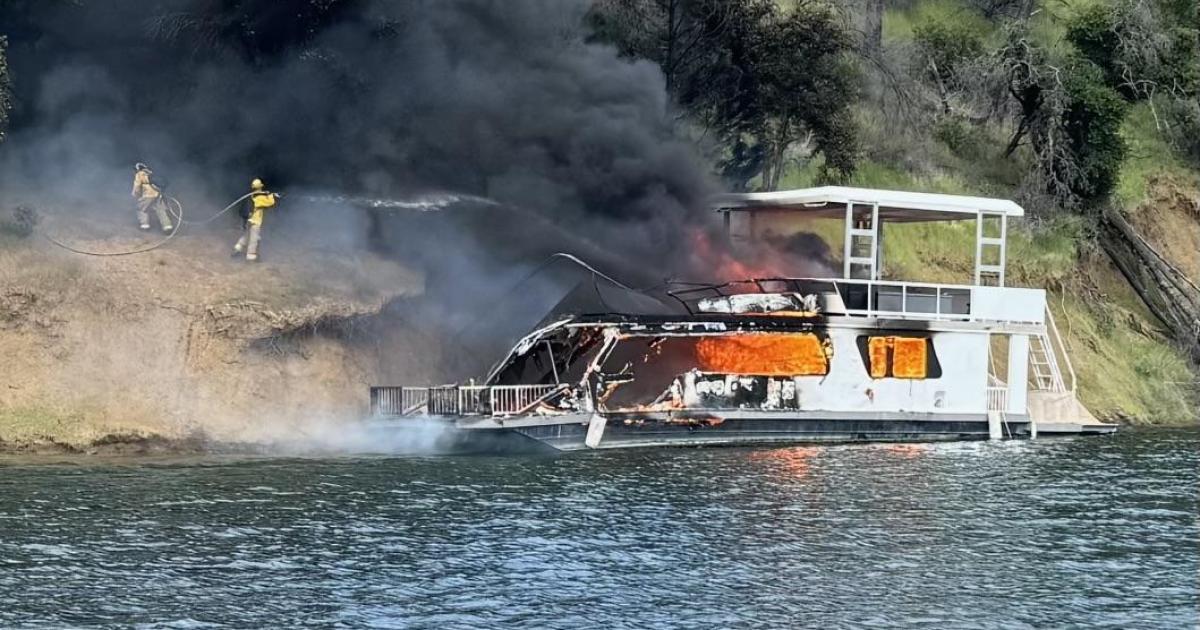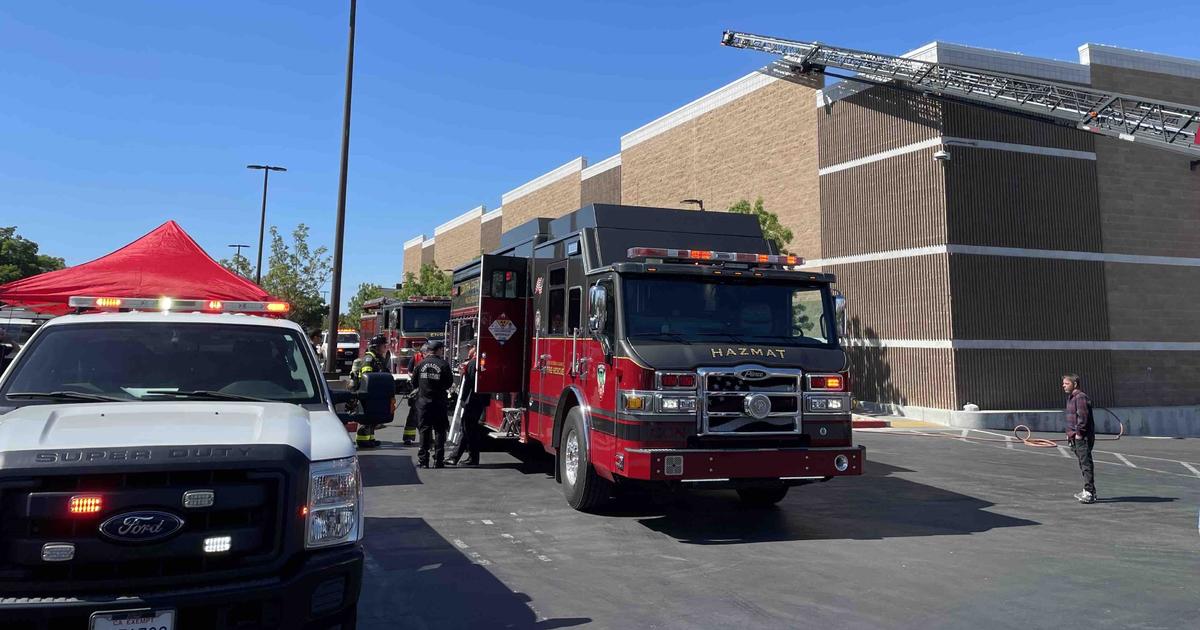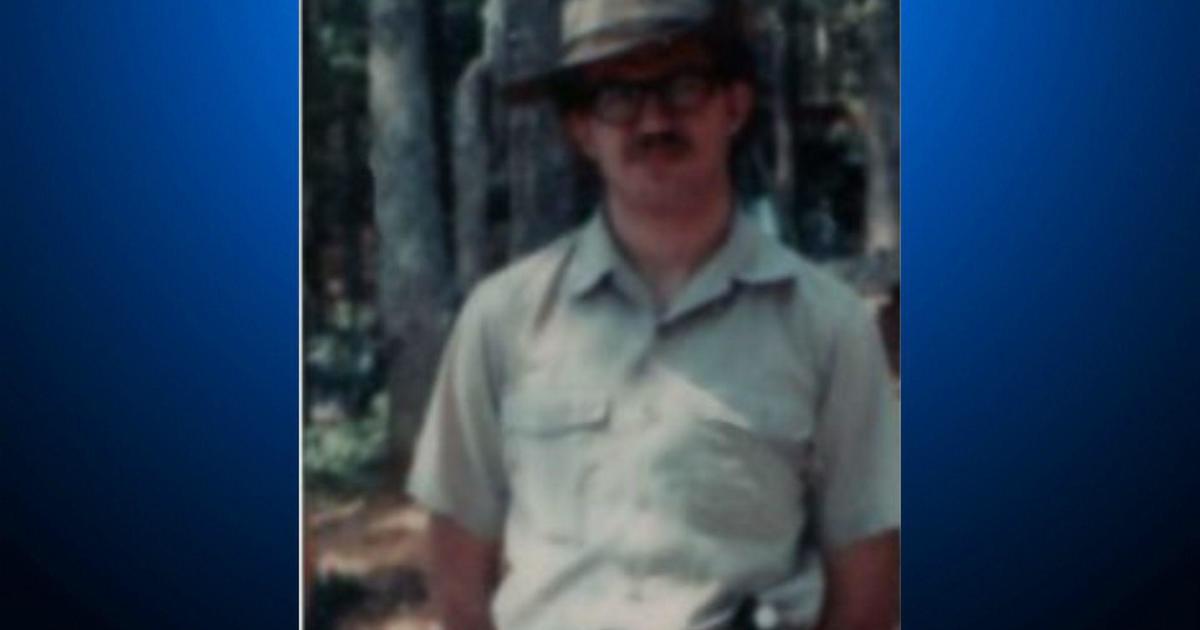Caldor Fire Update: Fire Grows to Nearly 200,000 Acres; Evacuations Ordered for Douglas County, NV
DOUGLAS COUNTY, NV (CBS SF) -- New mandatory evacuation orders were issued for parts of Nevada's Douglas County earlier Tuesday as the Caldor Fire grew to nearly 200,000 acres by evening, according to authorities.
The Douglas County Sheriff's Office issued the orders at around 4:22 p.m.
Excluding the casinos in Stateline, the following Douglas County communities were under the new evacuation orders:
• Upper Kingsbury (North and South)
• Central Kingsbury
• Lower Kingsbury
• Round Hill region and roads including Lower Elks Point
• Lake Village
• Lower Olivers, Kahle Drive region and roads
The evacuation orders also include areas from Highway 50 at Lake Parkway, East to Elks Point Road and State Route 207 (Kingsbury Grade) from Highway 50 to Tramway Drive, including all area roads North and South of Kingsbury Grade. Additional details were available on the Douglas County government website.
Meanwhile, South Lake Tahoe residents still looking for a place to stay after being evacuated from the city were being instructed to head to the Reno/Sparks Convention Center at 4590 S. Virginia St., Reno, NV 89502.
In addition to other shelters in the immediate area being at capacity, South Lake Tahoe city officials said that the shelter in Gardnerville was being closed, possibly due to the poor air quality and the encroaching evacuation order in Douglas County.
Those driven out of South Lake Tahoe remain hopeful.
"You start saying your prayers, hoping for the best. Hoping your house doesn't burn down; hoping you have a place to go home to," said Caldor Fire evacuee Mark Cutright.
The orders come as hundreds of firefighters continued to battle the advancing flames of the wind-whipped wildfire.
As of the Tuesday night update, the megafire has grown to 199,632 acres and was 18% contained.
Tuesday firefight near Twin Bridges
An intense firefight took place early Tuesday morning in the subdivisions surrounding the Sierra Mountain community of Meyers, as crews doused spot fires in attempt to save homes from the destructive path of the raging wildfire.
In describing the conditions Tuesday morning, Cal Fire officials said flames were spreading among the tree tops.
"Crown fire runs and ember casting remained active covering distances of up to three quarters of a mile," officials said. "Lower elevations of the fire saw strong down canyon winds that tested control lines."
The fire roared over Echo Summit on Monday evening after leaving a path of burned trees and homes along Highway 50, and began its downslope run toward the evacuated city of South Lake Tahoe.
By early Tuesday, the blaze was burning in and around Park River Estates along Highway 89, in the Meyers subdivision of Tahoe Paradise and advancing on Christmas Valley, about 10 miles from South Lake Tahoe.
Red Flag Warning winds fanned the flames and were expected to gust up to 40 mph on Tuesday. Combined with fuel from thick forests, difficult terrain and bone-dry underbrush, the wall of flames was unrelenting in its advance.
"This fire has show us to be unpredictable, terrain driven, weather driven, it's been very active, very rapid progression at times," said Cal Fire spokesman Keith Wade.
At the state line where many South Lake Tahoe residents headed after Monday's evacuation orders, an eerie quiet has settled on the normally busy stretch of hotels and casinos.
"I've watched this happen for the last two weeks. I never thought it would reach our area at all," said South Lake Tahoe resident Sue Meade.
Meade is on a waiting list for a room at the Hard Rock Casino, hoping her evacuation from her home will be short lived.
"It's unbelievable. It's surreal," she said.
"We're keeping these casinos and everything operational because we have a lot of fire assets that are staying here," said Tahoe Douglas Fire Marshal Eric Guevin. "So this is our core and this is a protected area."
In addition to the fire crews staying at the casino hotels, there are also a large number of evacuees from the communities in South Lake Tahoe.
Evacuees like Dawn Hinde and her husband were doing their best to stay updated on what was happening with the firefight.
"It's very difficult not to be able to see what's going on down there at our home, if it's there, and not having a lot of information come to you like where's the fire going," said Hinde.
She said it's equally as strange to see her home town of more than 30 years basically deserted. South Lake Tahoe would be filling up with visitors arriving ahead of a busy holiday weekend. Instead, the streets are empty and the air so thick with smoke it's hard to even make out the mountains.
"Not a soul around. It is creepy and sad and scary," said Hinde.
The blaze -- combining with the Dixie Fire burning farther north in Plumas and Lassen counties -- has also dashed the decades-long belief that a wildfire could not cross the Sierra Nevada. Both fires crossed the Sierra and had burned more than 1 million acres combined by Tuesday morning.
"We haven't had wildfires burn from one side of the Sierras to another," said Cal Fire Chief Thom Porter. "We did that with the Dixie [Fire], now we have with the Caldor. Two times in our history and they're both happening this month. So we really need to be cognizant that there is fire activity happening in California that we have never seen before."
Clouds of silver dollar size embers were being churned up by the flames, winds and falling trees, fueling the rapid advance near Meyers and down Highway 89. The advancing blaze forced officials to order nearly 22,000 South Lake Tahoe residents from their homes in a mass exodus on Monday.
"These ember casts can travel sometimes up to a mile ahead of the fire," Wade said. "It tells you that there is a risk, and that's why we are evacuating them, this fire can easily extend and those communities down there and the people, we want them out of harms way."
CALDOR FIRE:
Among the evacuees was long-time resident Will Cottrell. He was stunned as he watched the flames reach Echo Summit.
"That's a climbing area up there too," he said. "That hillside. It's cooked."
The 77-year-old waited until the last minute to leave his home just south of Meyers, turning on the sprinklers and packing up whatever he could
"I'm a physician and so my whole medical home office where I had to work for the last year is now squeezed into the back of the car," said Cottrell, as flames surrounded his neighborhood. "What I see now says bail out."
Initially, residents fleeing the fire clogged the only route out of town. But by late Monday afternoon, the normally bustling tourist mecca took on the appearance of a ghost town. Hotel and casino parking lots in Stateline were empty, businesses and restaurants shuttered.
Meanwhile, evacuation centers set up in nearby Gardnerville, Reno and Truckee were filled to near capacity.
Among the evacuees housed in Gardnerville was South Lake Tahoe resident Don Caudle.
"I think it's going to be weeks before we can go back," he said. "I lived in Tahoe for 40 years and they've never had a fire like that."
Porter said at a briefing on the state's wildfires that the Caldor Fire grew by more than 20,000 acres since Sunday and in conditions that had fire spreading in all directions.
ALSO READ: Caldor Fire Threatens Beloved Camp Concord on Shore of Lake Tahoe
"Difficult road conditions, hard to access. It's been burning in heavy timber, just very, very difficult conditions," said Porter. "We've been making headway at times. I reported last week about how we have effectively an inversion that puts kind of a lid on fire activity. But then when the air clears, it's like taking a lid off of your pot of boiling water. All of a sudden, there's that plume of heat and steam that comes out, same thing happens on a fire. Also it sucks in oxygen from all directions, put fires and spot fires in all directions. That's what happened yesterday."
Raw Video Of Flames In Park River Estates
Outside of the Tahoe Basin, spot fires also erupted Monday in Lower Echo Lake, Aloha Lake and Desolation Wilderness areas.
The El Dorado County Sheriff's Department issued additional mandatory evacuation orders Monday for the western shore of Lake Tahoe, from Emerald Bay to Tahoma on the Placer County line and then west to the border of the Desolation Wilderness.
Cal Fire Operations Chief Tim Ernst said the fire made a run on Sunday from around Strawberry on Highway 50 northeast to Echo Lake, where it was burning on Monday morning.
"A number of structures were lost in that area," Ernst said.
So far, the flames have destroyed 482 homes -- many of them residences in the fire-ravaged community of Grizzly Flats and along Mt. Ralston Road off Highway 50 -- and were threatening another 21,451 structures.
Flames also continued to threaten the Sierra-at-Tahoe ski resort, located near Echo Summit. On early Tuesday, webcams showed towering flames near the ski runs where large snow-making machines were being used to keep the vegetation wet.
The fire, which was first reported on Aug. 14 near the community of Grizzly Flats, is not expected to be fully contained until at least Sept. 8. Officials said the cause is under investigation.



